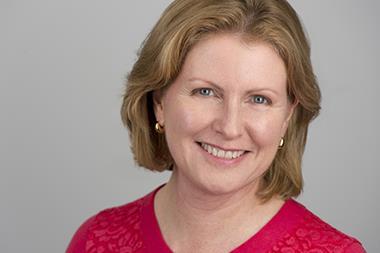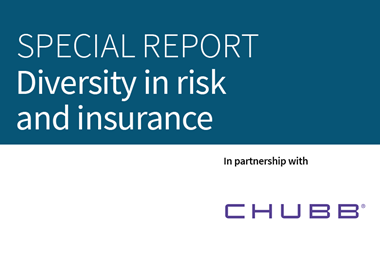In a first of a series of articles on workforce diversity, industry experts consider how strategy and cultural change could help attract a more varied workforce

The key to creating a more diverse sector is cultural change – companies must appeal to a wider talent pool and develop diversity strategies.
“Firms must become attractive to applicants,” says Bombardier’s Malwine Braunwarth. “I strongly believe that in a job interview it will become more and more the company’s task to ‘look attractive’ to an applicant, rather than the other way around.”
In many cases this may involve making changes to where staff are recruited from, and apprenticeships are one way of reaching out to those from more diverse, non-graduate backgrounds.
In the UK the Chartered Insurance Institute (CII), the Association of British Insurers (ABI), the British Insurance Brokers’ Association (BIBA) as well as partners from across the insurance and risk management industry have united to support an insurance sector apprenticeship programme that has already brought over 1000 young people into the sector.
“Without recruiting new talent and apprentices, we will not be able to innovate and succeed to meet the challenges of our fast-changing world so it is vital we support this agenda,” says Louise Hanson, director of advocacy at the ABI.
Although there are no figures, anecdotal evidence already suggests that apprenticeships are attracting more non-white, female employees than graduate schemes.
In time, these programmes should be developed beyond young people. Older workers have a lot to offer in terms of skills and experience and, according to several executives, finding ways to bring them into the workforce through appropriate training and outreach is already a priority.
Other approaches to diversity call for a simple re-think of long-held assumptions about working practices.
The prevalence of corporate events based around alcohol can exclude muslim staff and some older workers may not feel able to attend late-night drinking sessions.
Image problem
Indeed there is much work to do. First, there is the public perception of the insurance industry. “Insurance is still seen as a rather grey, male and middle class job,” says Beale. “So the industry has a big PR job there.”
Giles Ward, president of ACE’s Eurasia and Africa region, says: “[Many people] see insurance as a commoditised grudge purchase for motor and household insurance. Few outside the industry know what a wide range of complex talents and skills are required to manage a business that covers everything from typhoons to satellite launches, medical trials to mobile phones.
“It is a genuinely fascinating business to be in. Insurers don’t sell it well enough.”
Continued progress
Ultimately, diversity is about bringing an end to exclusivity at every level of corporate life, however this is being reinforced, and the best programmes recognise this.
“Male leaders are invited and welcomed to [our supper club] events,” says Barbara Schönhofer, founder of Insurance Supper Club. “This has helped put [diversity] more into the spotlight in the wider business but more specifically in the industry. People are talking about it more and this has generated effort to address the issue.
“There have already been some radical changes. In the next five years, the landscape will be significantly different. The momentum is huge now and growing by the day.”
ACE’s Giles Ward agrees. “I see this as an issue that will continue to make progress over the next few years. I hope that a generation from now people will be wondering why this was ever an issue.”
He recognises that the approach involves challenges. “To give an example, how do organisations tackle issues such as discrimination on the basis of sexuality in countries where homosexuality is illegal? Or deal with staff issues where religious differences can be the cause of real conflict?
“While businesses have to be cognisant of local sensitivities in how they communicate, they have to be very clear about where their values lie and what they will and will not tolerate in a work environment.
“To an extent, doing that creates its own solution – organisations will attract the type of people to their teams who value and respect diversity.”
To read the full report on diversity in risk management, please click here
Key strategic moves
1. Develop a hiring strategy to make the workforce more similar to the community in which it is based.
2. Create internal role models or champions and model positive attitudes on diversity from the very top.
3. Where there are two candidates who in every other way are equal in suitability, have a policy to recruit from the under-represented community or gender.
4. Above all, make it absolutely clear that diversity is a fundamental commitment for the future, and something for which the business can become famous.
Downloads
Sr 23 26 special report
PDF, Size 0.48 mb




















No comments yet